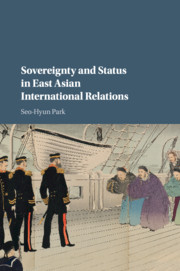Book contents
- Sovereignty and Status in East Asian International Relations
- Sovereignty and Status in East Asian International Relations
- Copyright page
- Contents
- Preface
- Introduction
- 1 How Hierarchy Endures
- 2 Hierarchy and Regional Order in Premodern East Asia
- 3 The Emergence of Sovereign Autonomy as a Modern Security Concept
- 4 Enduring Hierarchy in Postwar East Asia
- 5 Competing Frames of Autonomy and Domestic Legitimacy Politics in Japan and South Korea During the Cold War
- 6 Contesting Autonomy and Alliance in Post-Cold War East Asia
- Conclusion
- Bibliography
- Index
- References
Bibliography
Published online by Cambridge University Press: 05 July 2017
- Sovereignty and Status in East Asian International Relations
- Sovereignty and Status in East Asian International Relations
- Copyright page
- Contents
- Preface
- Introduction
- 1 How Hierarchy Endures
- 2 Hierarchy and Regional Order in Premodern East Asia
- 3 The Emergence of Sovereign Autonomy as a Modern Security Concept
- 4 Enduring Hierarchy in Postwar East Asia
- 5 Competing Frames of Autonomy and Domestic Legitimacy Politics in Japan and South Korea During the Cold War
- 6 Contesting Autonomy and Alliance in Post-Cold War East Asia
- Conclusion
- Bibliography
- Index
- References
- Type
- Chapter
- Information
- Sovereignty and Status in East Asian International Relations , pp. 174 - 209Publisher: Cambridge University PressPrint publication year: 2017



